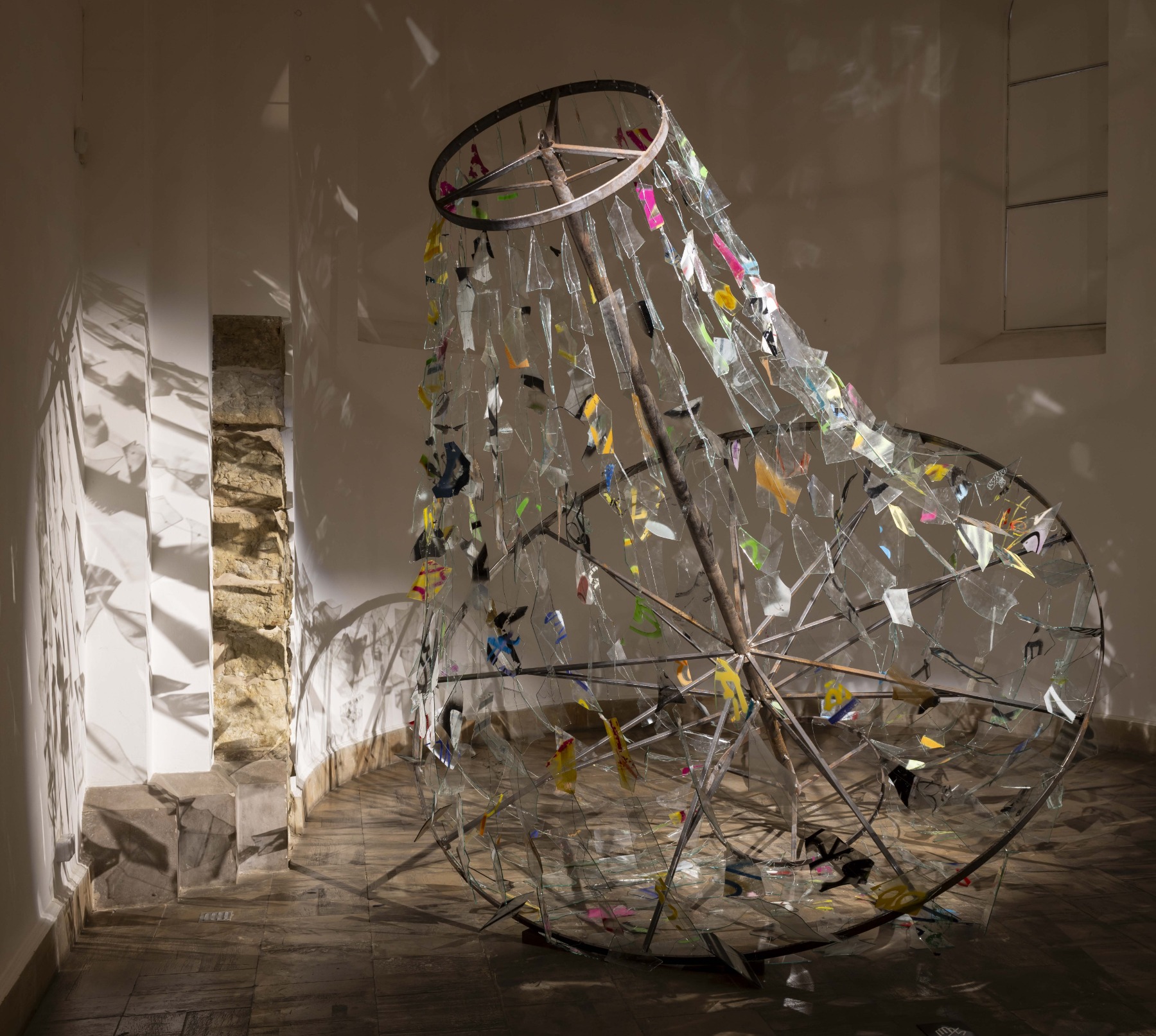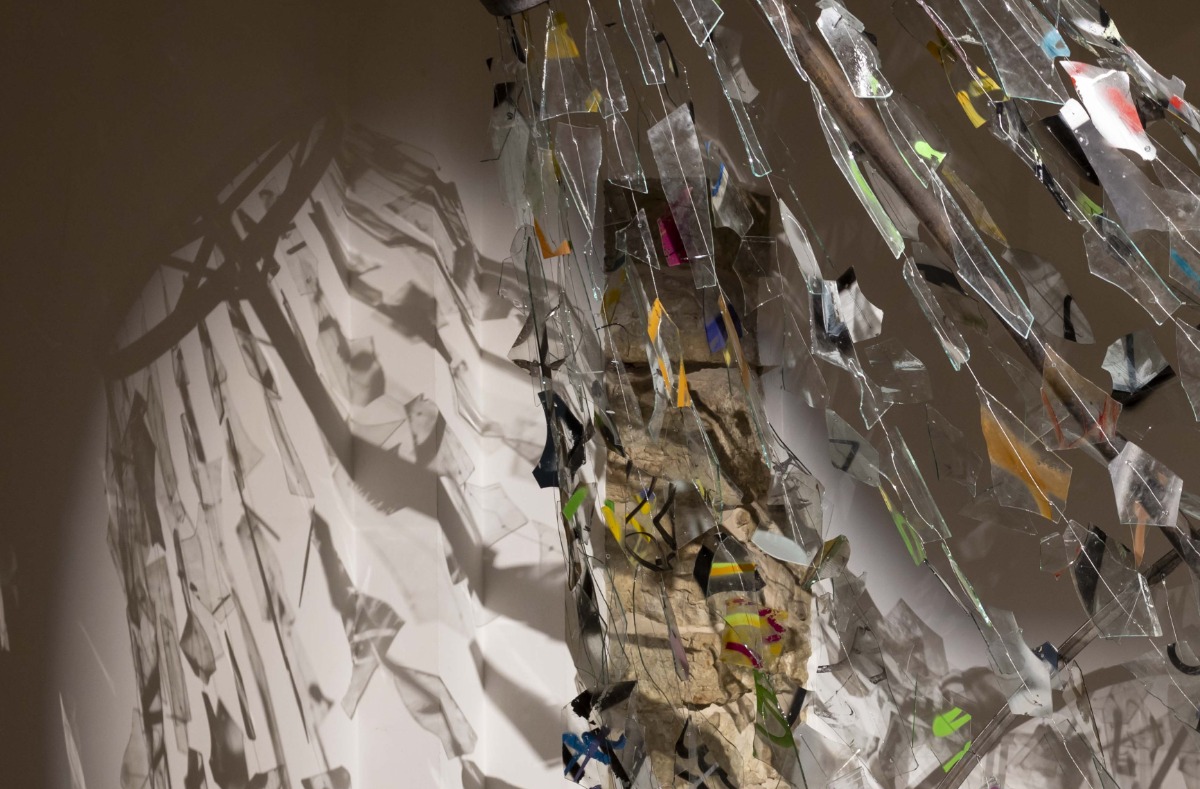
Layers of glass
Highlihts of the ‘Layers’ exhibition / on view at the Museum of Decorative Arts and Design in Riga till 18 May 2025
An impressive Baltic contemporary glass art exhibition entitled ‘Layers’ is on vew at the Museum of Decorative Arts and Design in Riga till 18 May 2025. Exhibition embraces the work of 24 talented artists from Latvia, Estonia, and Lithuania. The atmosphere and mood of the show immerse the viewer into a beautiful, fragile, and at the same time powerful world expressed through the poetic and slightly mysterious medium. The title of the project is based on the idea of multidimensionality, uncovering the nature of objects and phenomena from different perspectives.
The objects represented at the Baltic contemporary glass art exhibition were judged and selected through a competition by a panel of curators – Kati Kerstna (Estonia), Dalia Truskaitė (Lithuania), Bārbala Gulbe, and Marta Ģibiete (Latvia). The jury also included other local and international experts of the field. Finally, the exposition demonstrates 23 individual and collaborative artworks by 9 artists from Latvia, 7 from Lithuania, and 7 from Estonia.
The show offers a rich spectrum of art – from intricately crafted paintings and glass graphics on paper to large-scale installations, monumental glass piles, and molten glass sculptures. Here we present a selection of the curators’ highlights – three works from each country.
3 Latvian artworks from the ‘Layers’ exhibition / Selected by curator Kati Kerstna (Estonia)
Kārlis Bogustovs. ‘Glass and Skateboarding’, 2022
Kārlis Bogustovs brings the youthful energy of his generation to the context of the museum. The skateboard, which is partly made of recycled glass, brings the urban, modern, architectural side of glass into focus.
At the same time, due to the chosen technique, the work has a slightly archaic and used up look, and for me, it creates a strange feeling of shift in the timeline – the ancient history of glass is progressing into the future, and the present moment – energy, youth, action, which are recorded in Kārlis Bogustov’s work – pass over to the far future to shape history. The space of the museum also contributes to this impression.
Nevertheless, the sense of joy and energy does not vanish – rather, it becomes especially valuable. At present, considering our general tendency to dissolve into the smart world of technologies, this work creates vigorous hope and requires action to ensure that youthful energy and spirit would not become only the museum exhibit.
Photo: Didzis Grodzs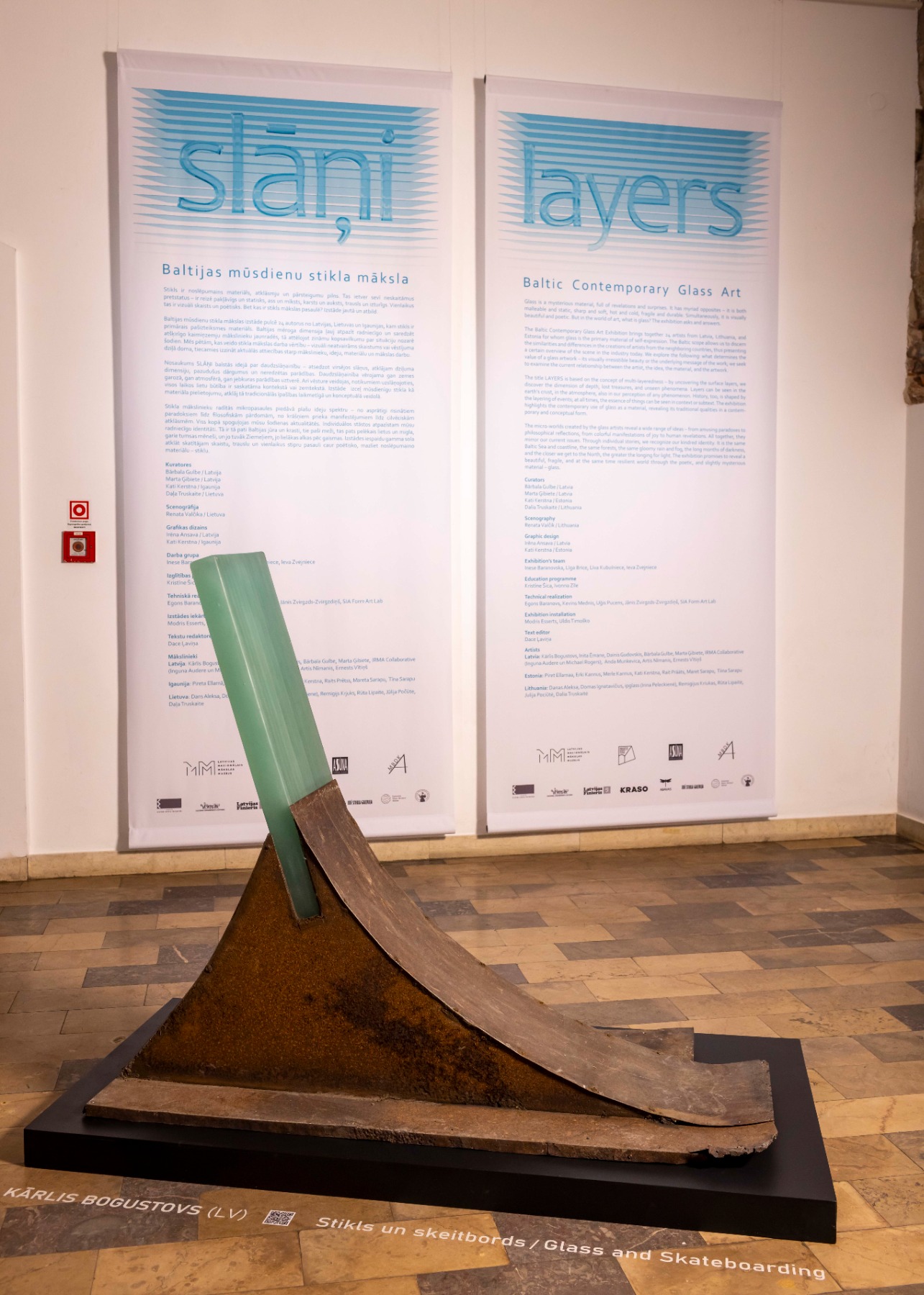
Photo: Didzis Grodzs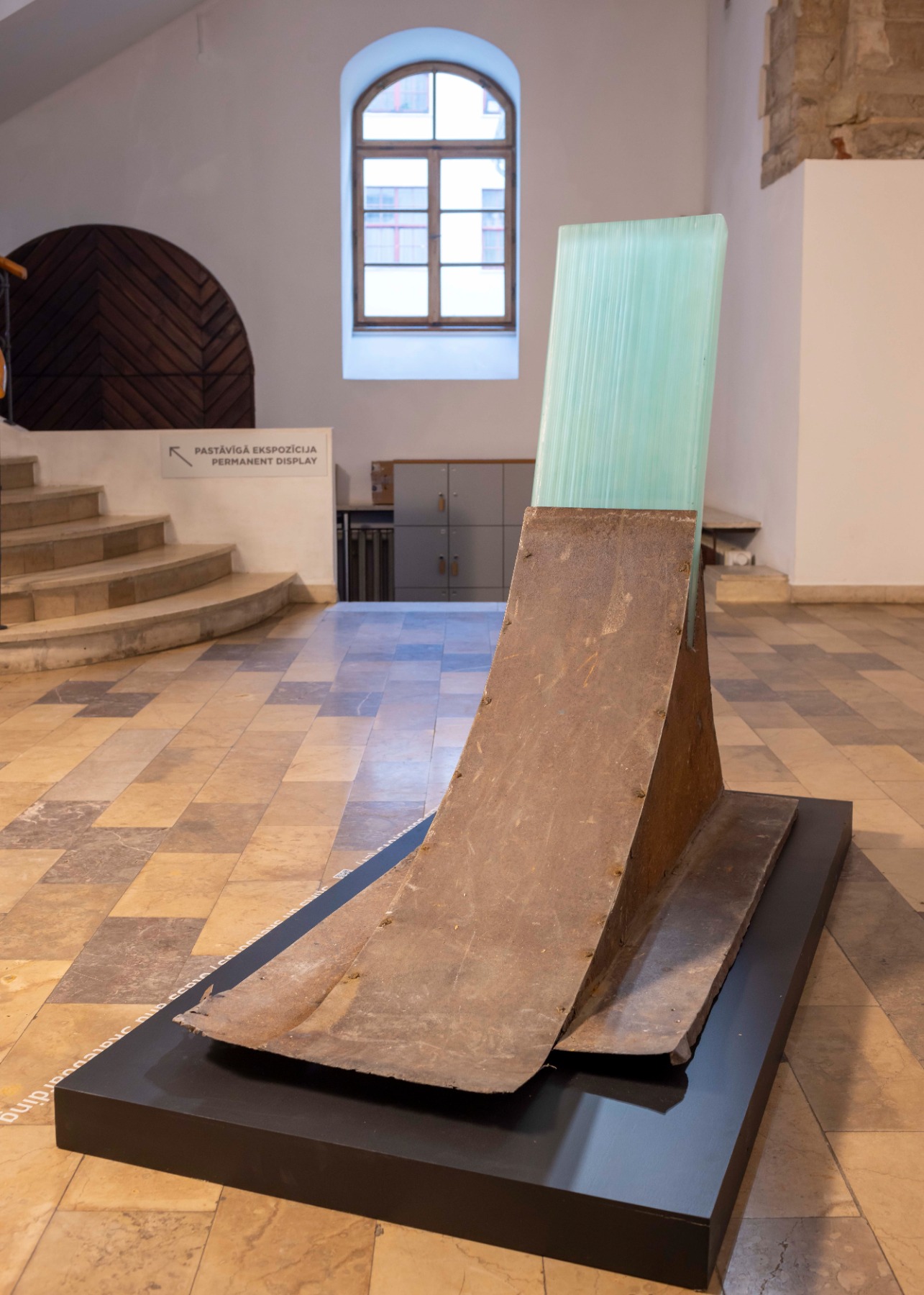
IRMA Collaborative. ‘Diary of an Anarchist’, (2012, 2013, 2024, 2025)
IRMA Collaborative, a tandem of two artists (Inguna Audere and Michael Rogers), has exhibited the installation “Diary of an Anarchist”.
Here too, I experience a time shift, although not as imperceptibly strong as in the case of the skateboard. The artists are on the wandering paths of their youth – both have been inspired by ‘Steppenwolf’, stylish classics for me (and my generation). The installation is a cluster of philosophical subtext and ambiguous mood. A symbol of the anarchist and tireless dissent in a world of imposed mono-thinking.
The addressed problem is disturbingly topical and unfortunately sharply characterizes the current modern era – what should be done if gathering around the table is not enough, when a common language and mutual understanding has not been reached?
The balance between the strength and fragility of glass as a material becomes painfully tense and therefore, the installation formally looks like a still life and, essentially, as something that is at risk of breaking. The space prepared for intellectual discussion is either on hold or abandoned, and represents, again, some kind of state – the possible loss which inevitably creates a feeling of helplessness.
Photo: Didzis Grodzs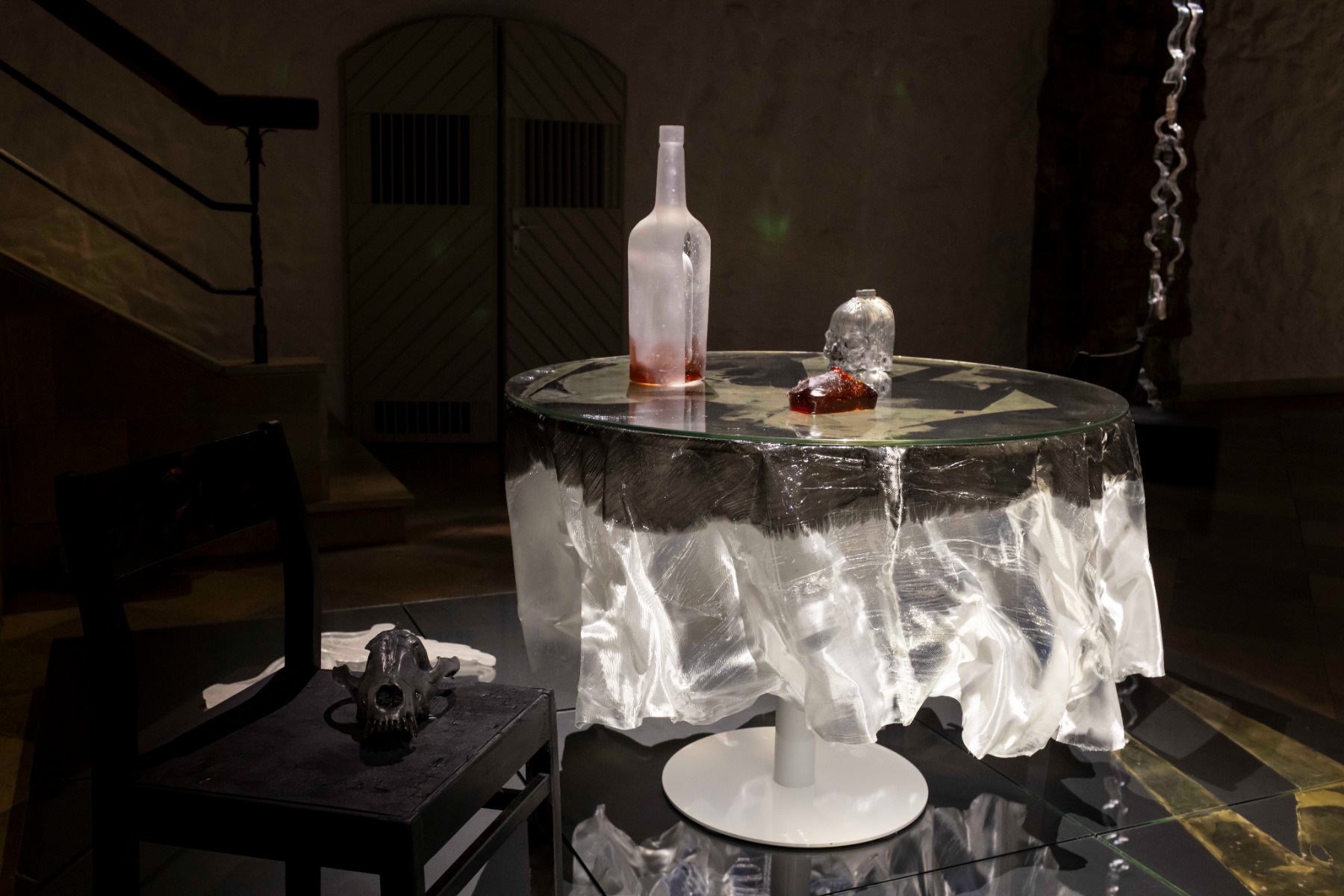
Inita Ēmane. ‘Light Flux Network’, 2025
Inita Ēmane’s installation ‘Light Flux Network’ is a recreated emotional memory of a very old woolen blanket from the Vidzeme region in Latvia. It is woven with ethnographic patterns, and it is naturally dyed. The blanket, once a symbol of warmth and security, is transformed into the glass artwork – the subtle patterns are as if levitating into the space of the hall under the influence of light, and, accidentally, passing nearby, the entire installation sways quietly, and the spots of light captured on the walls in the darkness sway in their own rhythm. The warmth of the old woolen blanket is gone, instead, we feel almost hypnotic thoughtfulness. The blanket has transformed into a network of lights. Memories and emotions come about and keep our soul in comfort.
Photo: Kristiāna Zelča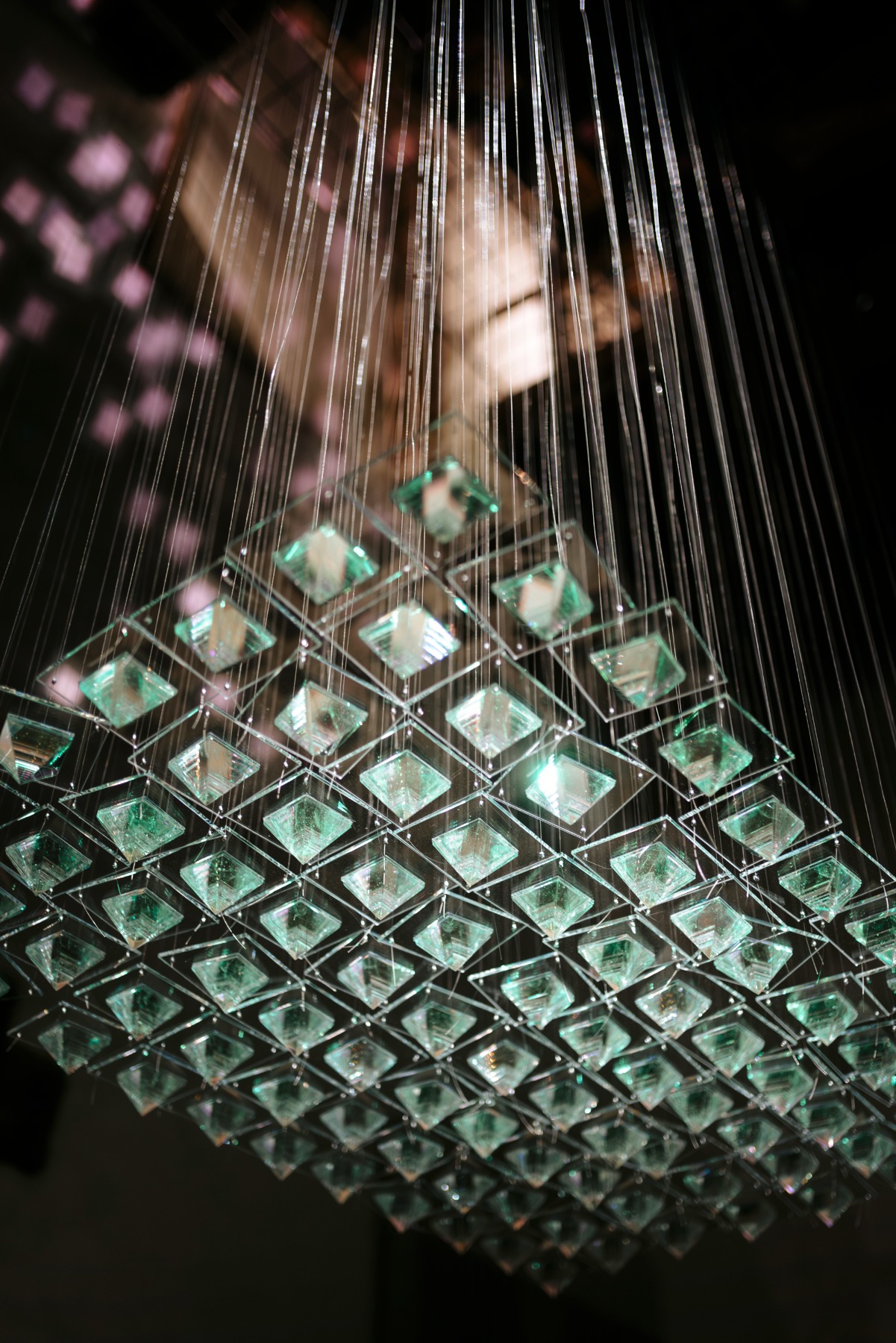
Photo: Didzis Grodzs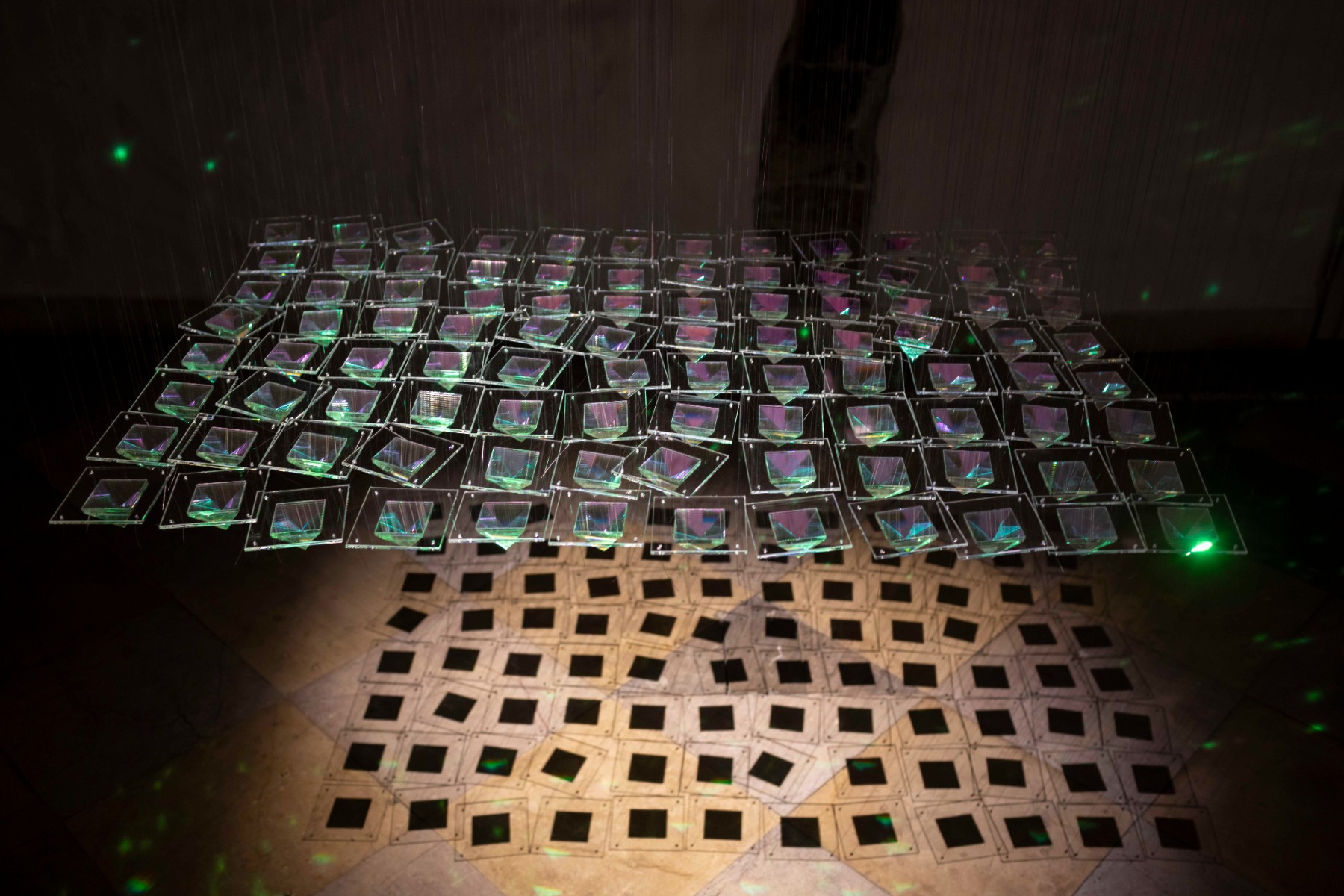
Photo: Didzis Grodzs
3 Lithuanian artworks from the ‘Layers’ exhibition / Selected by curator Bārbala Gulbe
Danas Aleksa. ‘Fucked Windows’, 2017
Danas Aleksa’s installation ‘Fucked Windows’ is created from fragments of windows from abandoned buildings, assembled into a unified composition resembling a giant chandelier. The artist provokes us to investigate the past and encourages the viewer to sense the passage of time and the transience of the material world. The first association with this work is fragility. The reality of forgotten or abandoned places and their discreet charm is reflected in the chandelier, which stands solitary and abandoned, as if accidentally left in the exhibition hall. The artwork serves as an observer, blending into its surroundings and reflecting them in various ways. Meanwhile, the disrupted flow of time awaits a response from the viewer.
Dana Aleksa’s works are characterized by time, space, and their interrelations. His creations often feature recurring motifs, incorporating fragments of everyday situations tied to specific locations. In this case, the story of abandoned buildings is placed within another narrative about change and processes of disappearance, about the possibility of rebirth not here, but elsewhere, in a different form.
Photo: Didzis Grodzs
Photo: Kristiāna Zelča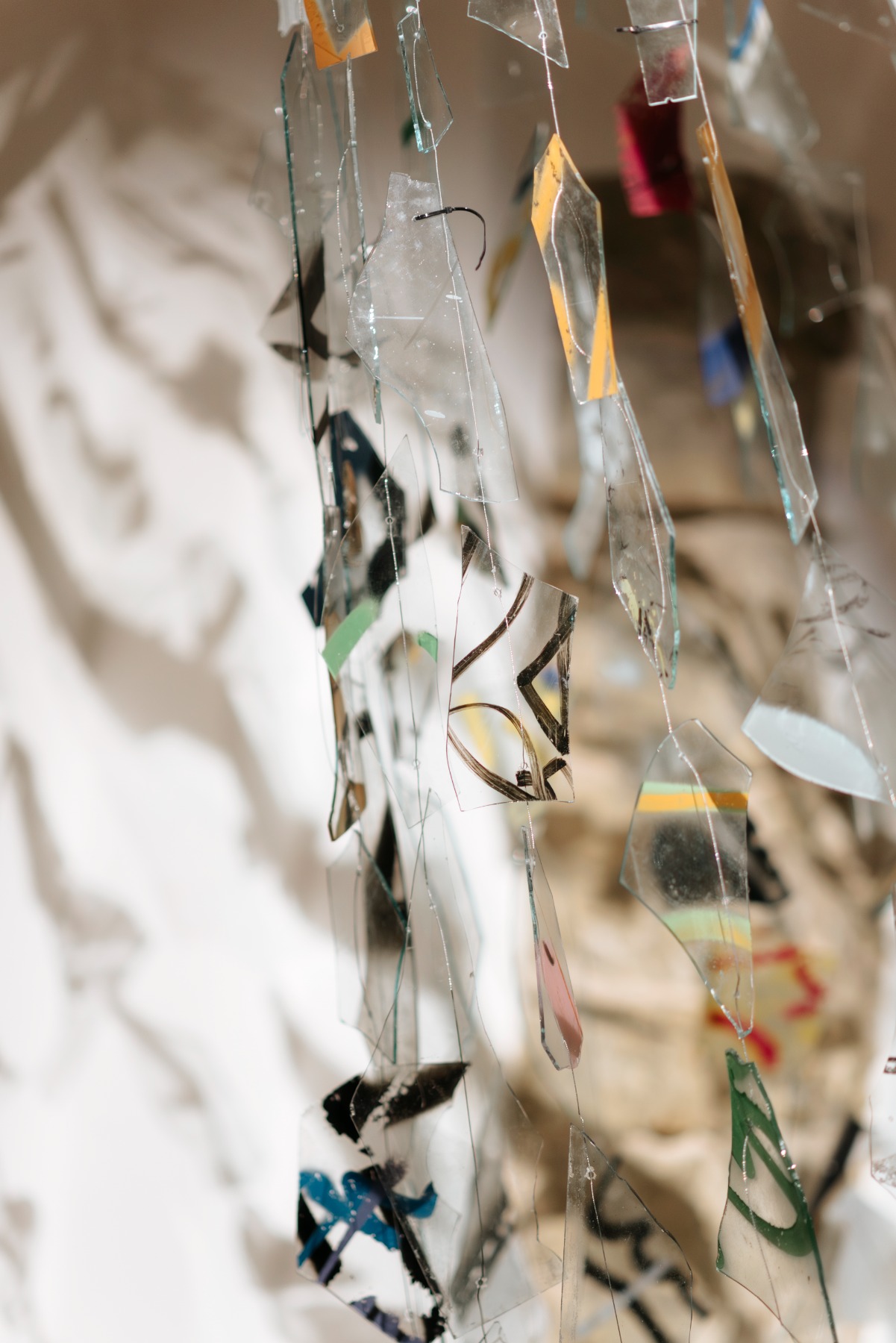
Domas Ignatavičius. ‘Chairtable’, 2024–2025
The identification of everyday objects, such as a glass-made table and chair with real object insertions, is perceived as a time capsule, whose shape points to emptiness, absence, or a process of metamorphosis. Where has the table gone? The work simultaneously represents the illusion of a glass display case and the impression of a museum exhibit. The shadow table is poetically laconic, like a poem. Everything is clear and understandable, yet simultaneously illusory. The work draws attention to the technological progress of society and civilization. The artist does not rely on imposed values but instead analyzes the everyday objects of the domestic environment, deconstructing them in various ways and creating his own visual pun for the viewer.
The artist himself asks: ‘Is an object only an idea, and do we only know its function? What does an object become if it is detached from its function, if all that is left of it is an image and it is placed in a different context? We live in times of material abundance, where the exchange of things is programmed into their production process – they are not repaired but recycled, becoming the seed for new things.’
Photo: Didzis Grodzs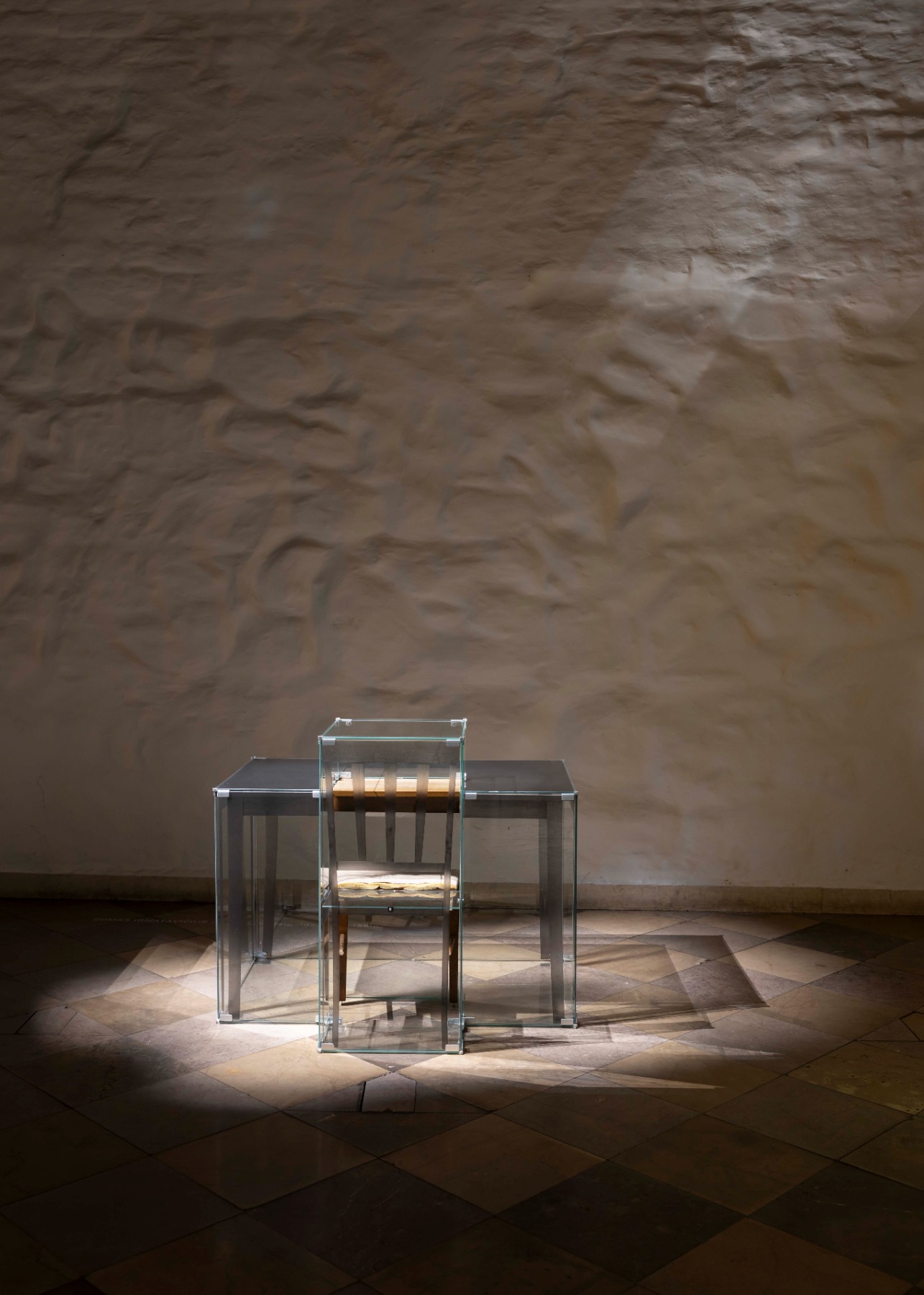
Photo: Didzis Grodzs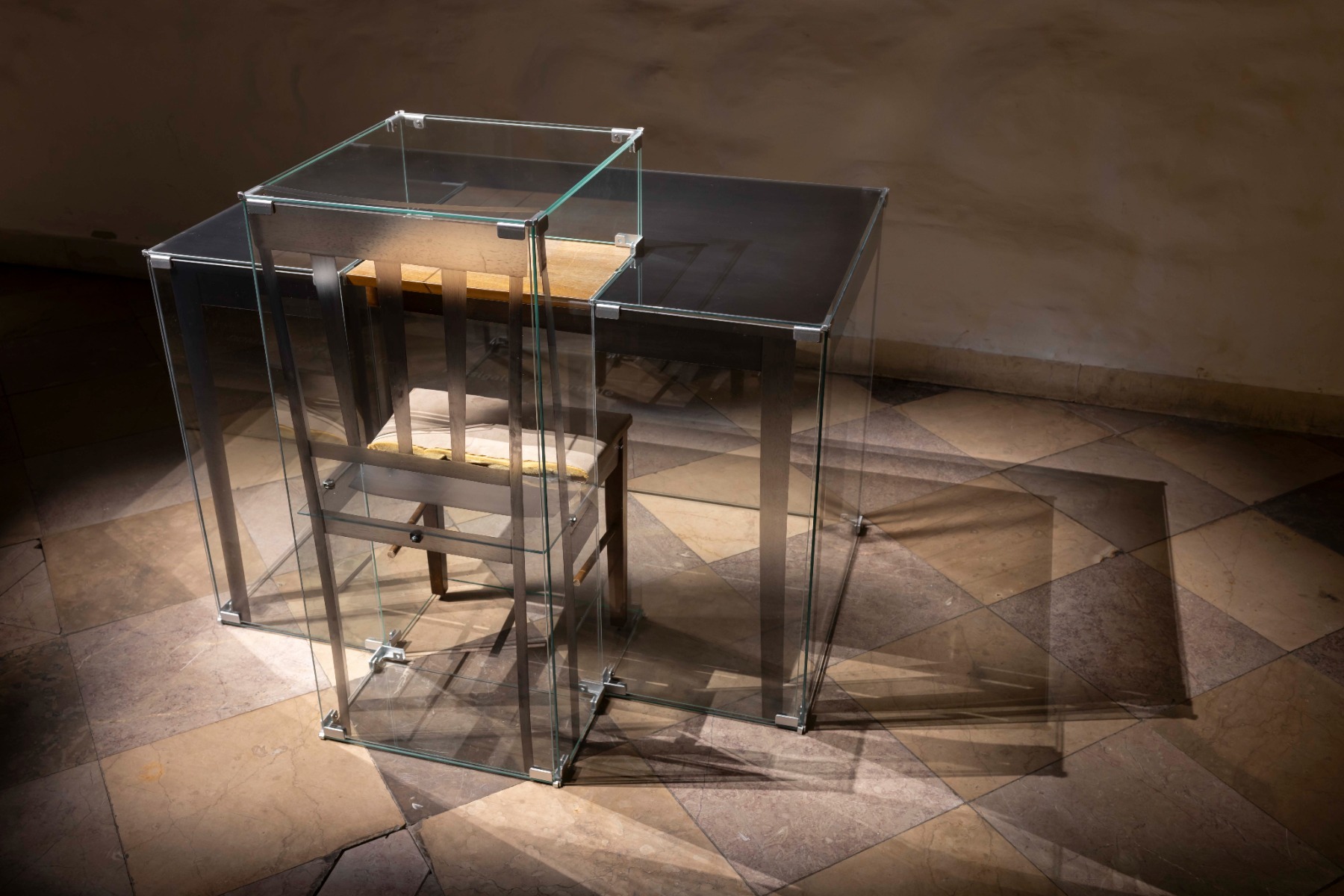
Rūta Lipaitė. ‘Curtain’, 2024
The space-dividing curtain is created here as a concentric circle in the room. It serves as a reference to all of us together. We are all as different in this world as the prayer beads from which the installation ‘Curtain’ is made. Naturally, the use of beads in the work conveys aesthetics, richness, and value, while simultaneously cultivating the ability to accept the signs of wear that develop over time, as well as the change of worldly objects and values.
The artist has collected the beads over several years, purchasing them from second-hand markets in Vilnius. Curtains usually conceal or separate, but here they serve as gates or barriers between the divine and the mundane. Viewers can physically interact with these sacred objects, which have gained their original significance from their previous owners and rituals. We are like a unified network with our thoughts, like a single curtain of faith in belief. The work invites us to search for the essential in the relationship between humans and art, life and death.
Photo: Kristiāna Zelča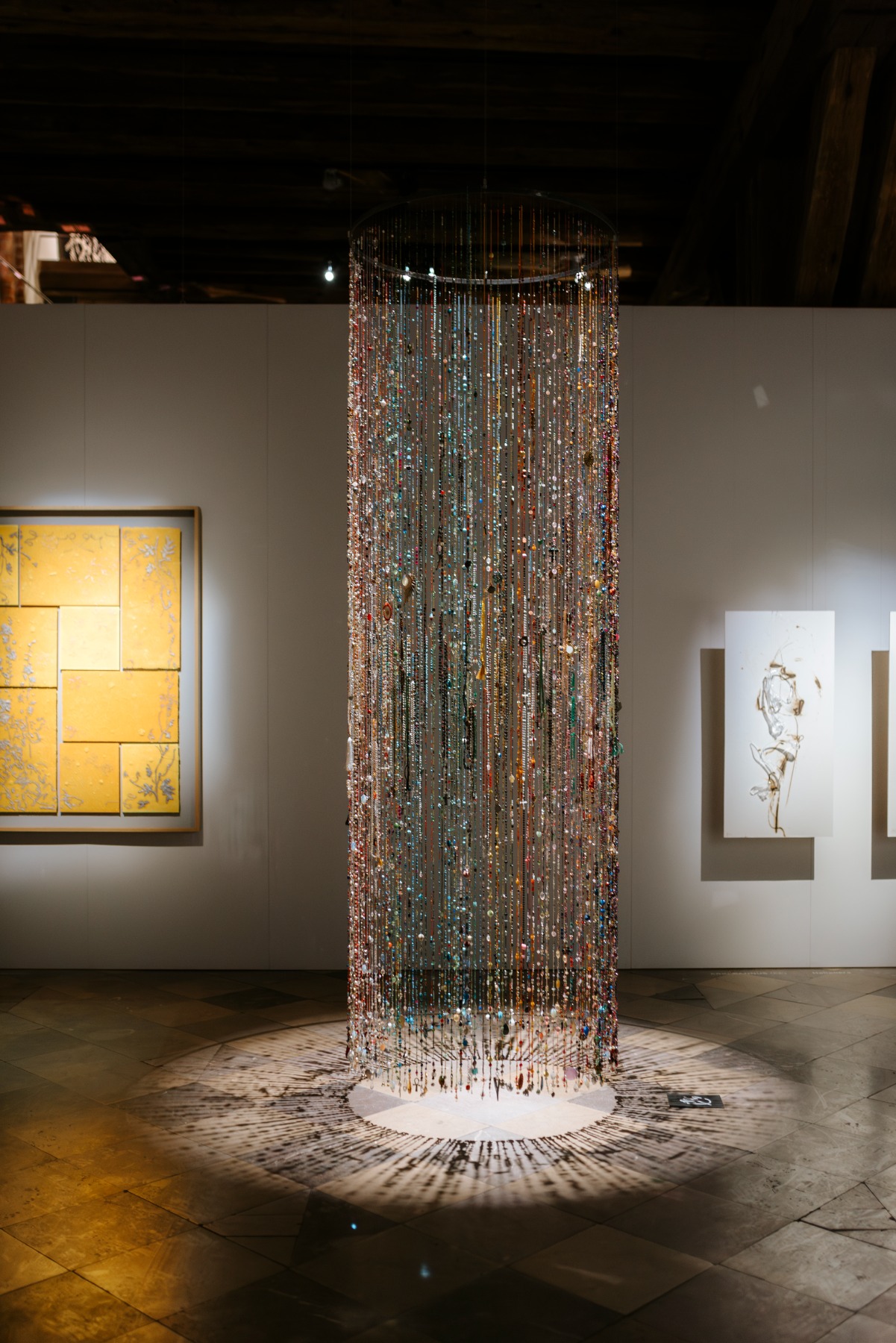
Photo: Didzis Grodzs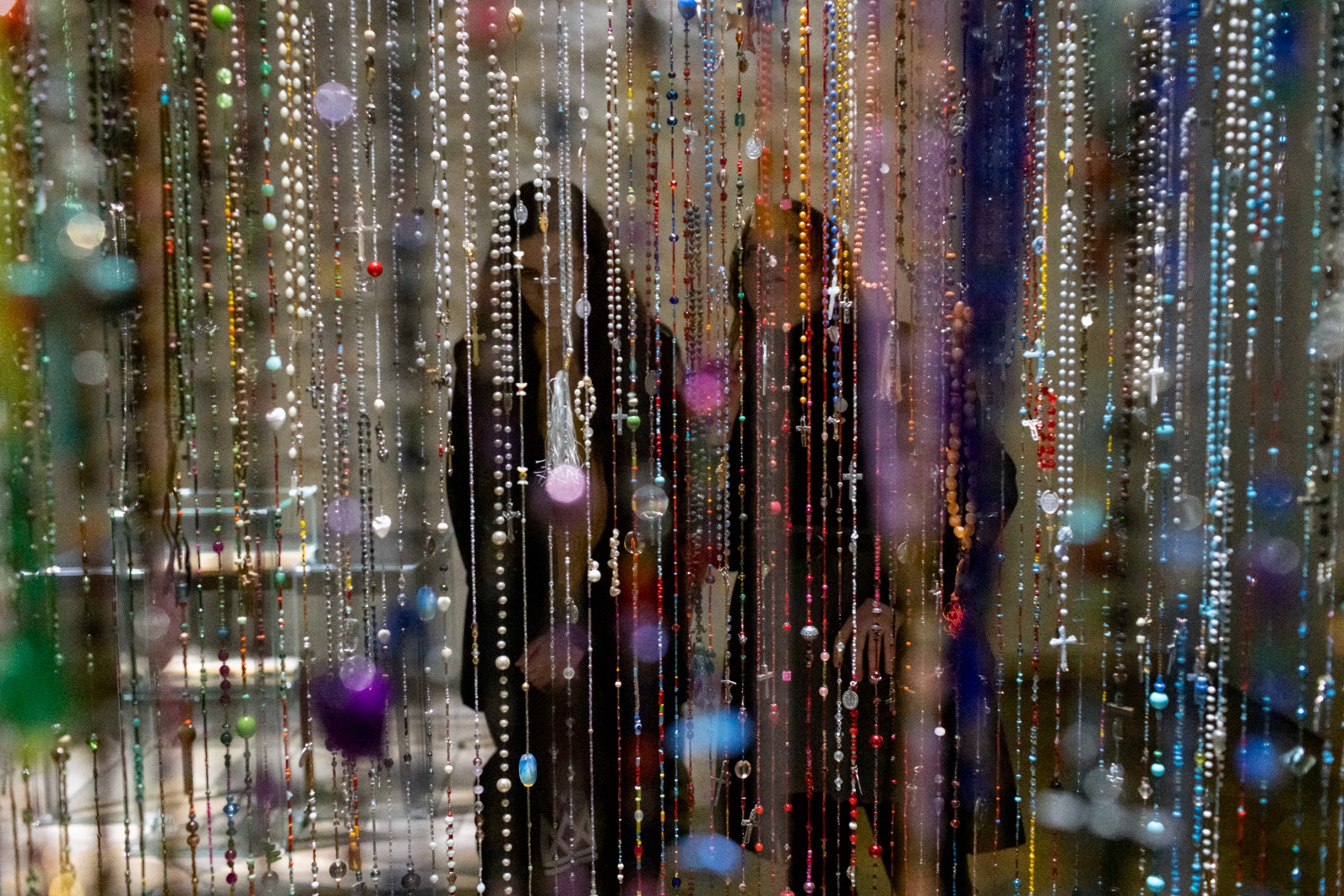
3 Estonian artworks from the ‘Layers’ exhibition / Selected by curator Marta Ģibiete
Tiina Sarapu. ‘Possibility’, 2024
Tiina Sarapu’s installation ‘Possibility’ offers a spatial experience through the interplay of shadow, material, and form. The artwork is executed in the artist’s signature monochromatic minimalist style, where clearly defined rhythms create striking graphic patterns. The image of a broken bridge evokes a wide range of associations and invites existential contemplation, while allowing the viewer to choose the emotional direction – toward peaceful elegy or anxiety-filled drama.
Sarapu invites the imagination to picture a fragile pontoon bridge – one from which you might leap, fly, fall, drown, swim, or simply sit on its edge, dip your feet into the water, splash around, and enjoy a summer evening as in childhood memories. The artist intentionally plays with the richness of possible associations, pointing out that each of us sees our own possibilities reflected in them.
Tiina Sarapu’s works stand out for their elegance and formal clarity, delivering a message that is both direct and powerful. One cannot help but admire her courage to remain faithful to minimal means of expression and her discipline in maintaining the purity of the line.
Photo: Didzis Grodzs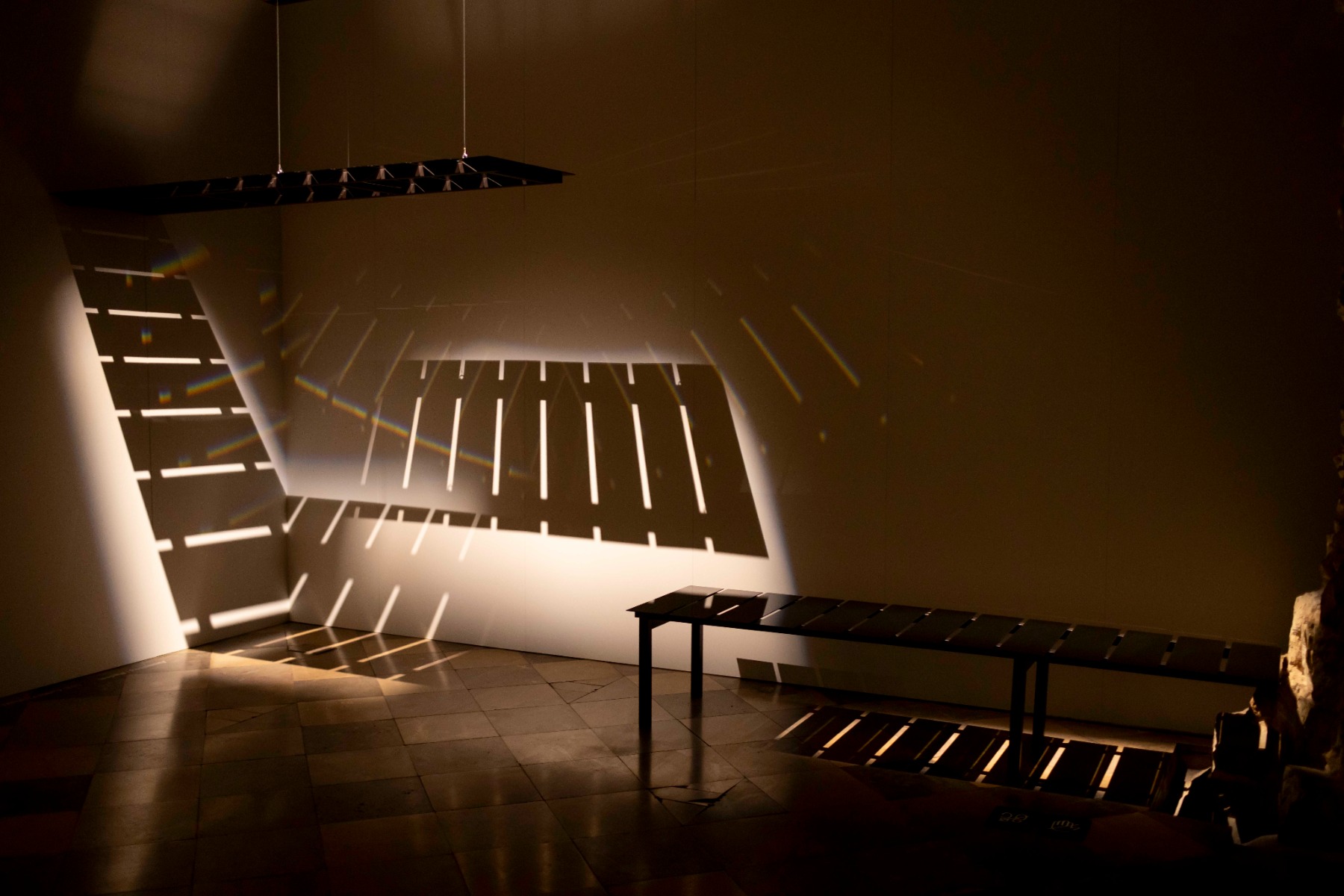
Photo: Didzis Grodzs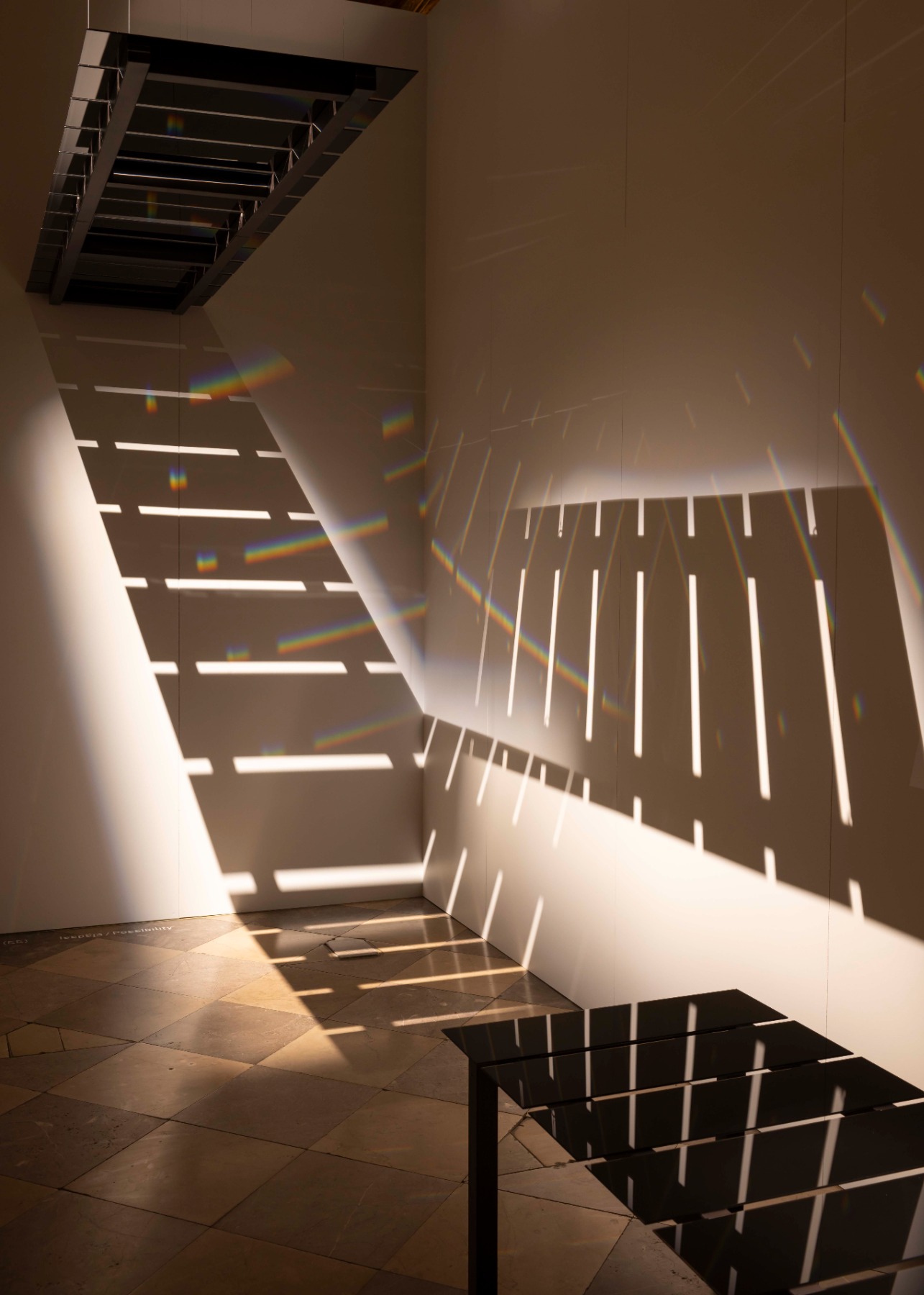
Piret Ellamaa. ‘Resonance’, 2019
Piret Ellamaa’s pair of glass objects is a classic example of the pâte de verre technique, often seen in Estonian glass art. Our northern neighbours frequently use and reinterpret this technique, exploring its expressive potential. In the ‘Layers’ exhibition, three artists have created works by fusing frit crushed glass, skilfully bending the method to their conceptual needs.
But this is not the main reason why Ellamaa’s works stand out. In her recent creative practice, the artist highlights the shaping of form as a meditative process. She invites the viewer to carefully explore the rhythmic structures, layer by layer, to find a sense of comfort and joy in endless repetition and imagined predictability.
As I studied the spatial construction and the unusual materiality – reminiscent of sugar in surreal colours – I experienced a joyful revelation, as if witnessing a visualized fairy tale. Though her works are small in scale, they fully captivate the viewer’s attention, demanding presence and gently luring one into a utopian world of fantasy.
Photo: Didzis Grodzs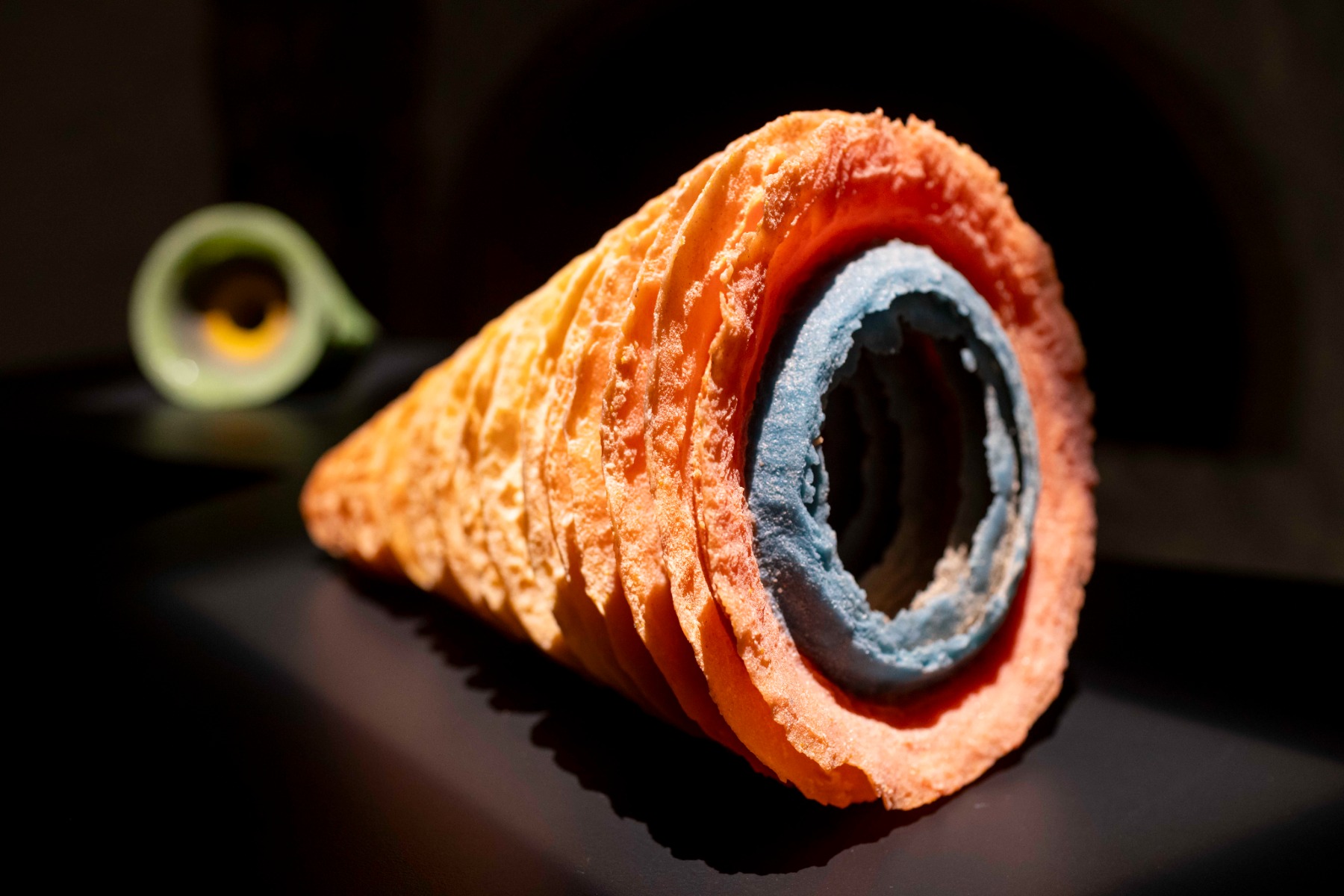
Photo: Kristiāna Zelča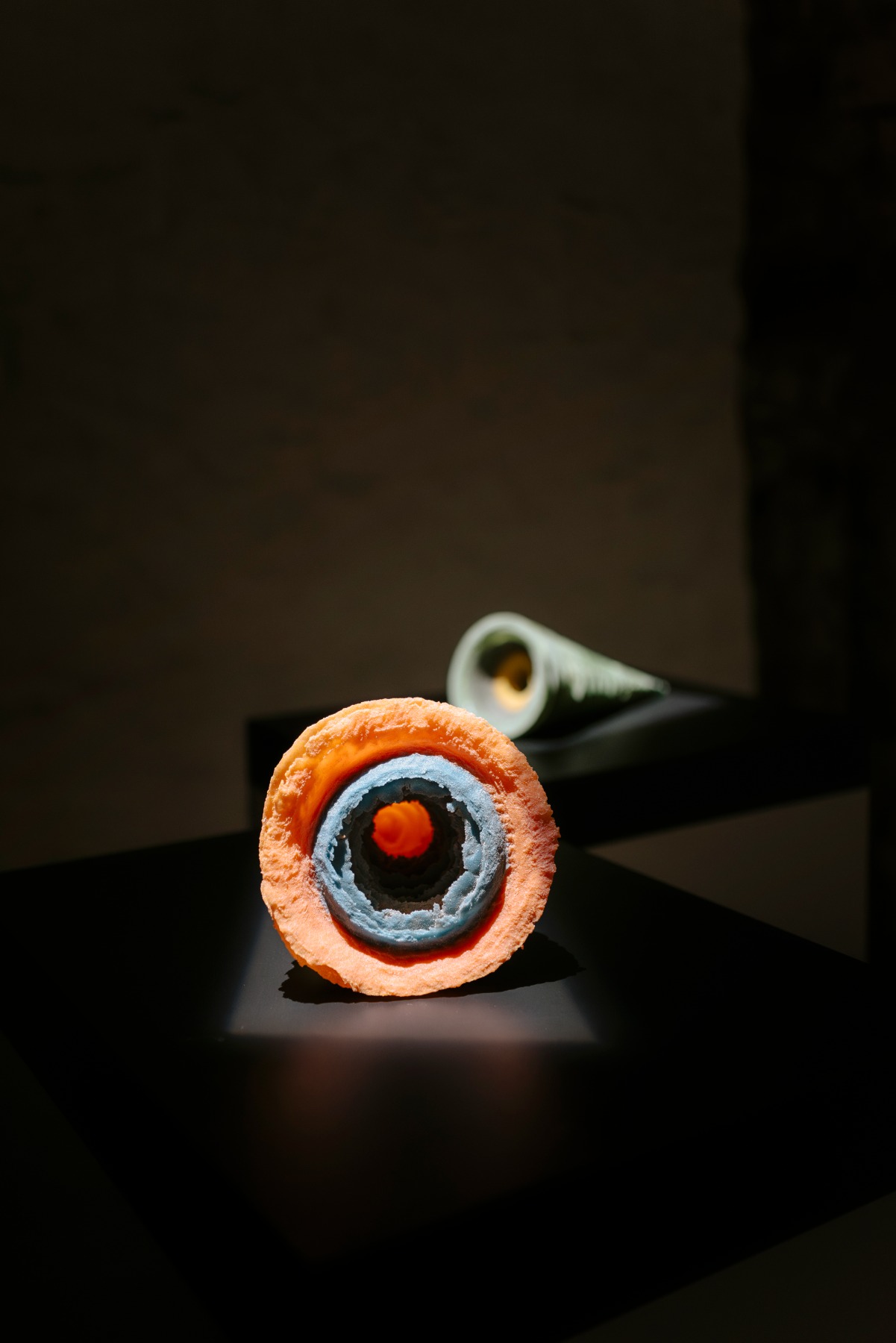
Erki Kannus. ‘Alegría Habanera’, 2024
Erki Kannus’s works are a dance between the artist and hot glass. A passionate and sensitive dance with the material – admiring it, allowing it to express itself, while guiding it gently and almost imperceptibly.
Kannus is a multidisciplinary artist – painting is his second muse, and music his passion – yet in glass, he explores processes and often reveals paradoxes. This time, Kannus has focused on the very essence of hot glass: a shapeless, molten fluid ready to become anything in the hands of the maker.
Rather than using this fleeting plastic moment to sculpt a defined design, he treats the glass like thick paint, sketching imagined dancers with free, natural gestures. He experiences movement, allowing gravity and temperature fluctuations to guide the process. The window of time in which the glass transforms from liquid to solid is extremely short – thus the sketch-like motions are quick and resonate with the artist’s idea of dance.
The works were created on cardboard surfaces, which burned during the process – visible traces of the passionate creative act.
Photo: Didzis Grodzs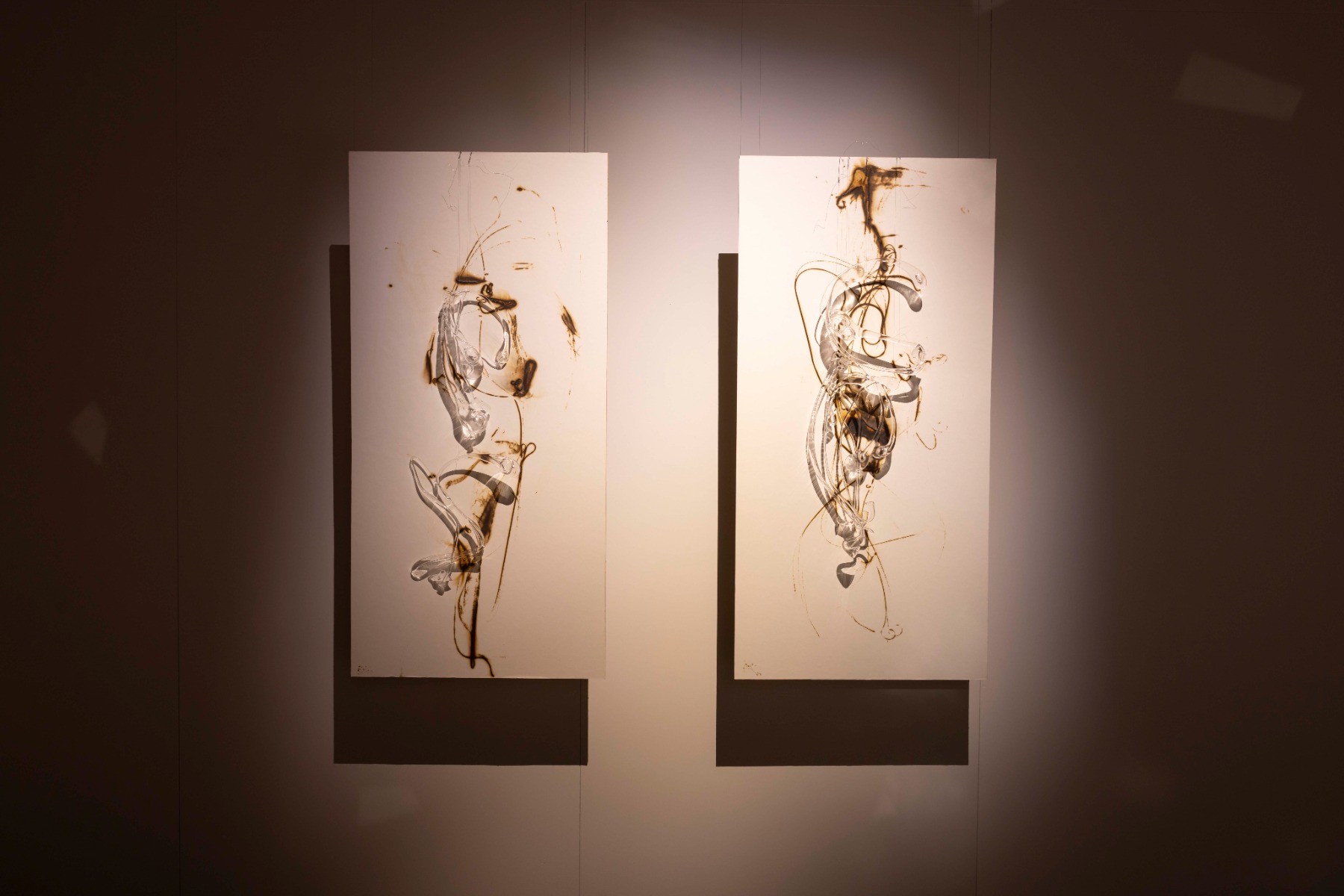
Photo: Kristiāna Zelča
